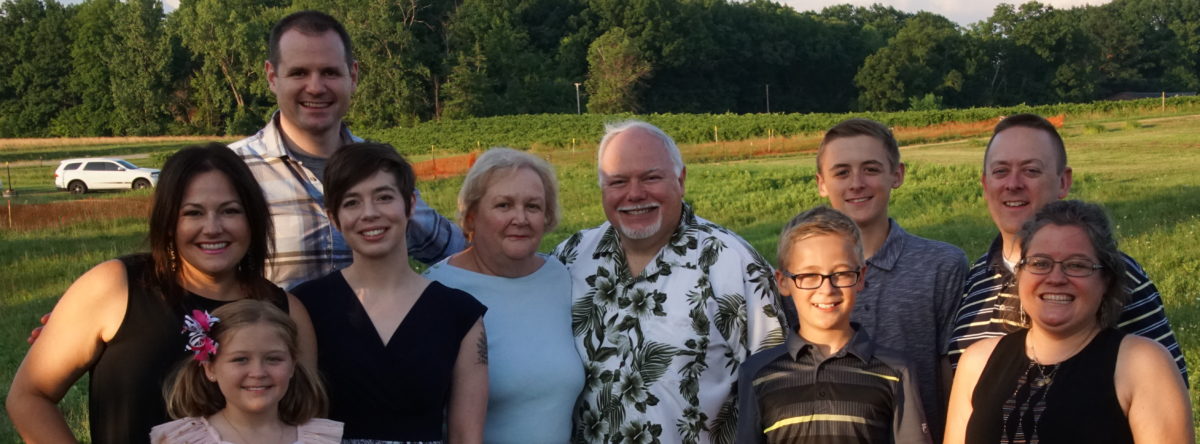I spent Saturday night in Chicago, attending my graduating class’s 45th reunion at St. Patrick High School. It was my first time back at the school since a few months after I graduated. While it was great seeing some of my classmates again, the highlight of the evening was reuniting with my old chorus director, Brother Konrad Diebold. And that made me think about the importance of extracurriculars, both in my own life and in general.
A great friend of ours believes that American schools should drop their emphasis on interscholastic sports and allow cities and clubs to organize recreational sports, as they do in Europe. And with all respect, I don’t think I can agree. Like it or not, extracurriculars are an integral part of the education process, and one of the great tragedies of education today is the obsessive pursuit of high test scores to the exclusion of almost everything else.
St. Pat’s is generally thought of as a fine school. It has been able to continue its mission of providing a faith-based education for young men as it did when it was founded in 1861. And yet, with a few exceptions, what I remember about St. Pat’s isn’t the academics. I was an indifferent student, working hard on things that interested me and not at all on things that didn’t. What St. Pat’s did have was an outstanding lineup of extracurricular activities. I have always had widely varied interests, and I belonged to a lot of extracurriculars in school. I very nearly lived at school, staying late many nights and working there on weekends. Forty-five years after graduating, I am still using things I learned in the extracurricular activities offered by my high school.
- In our tour on Saturday, one of the sites we visited was the gym. There in a loft above the gym was – as it was then – the TV studio. In the sixties, when videotape was an exotic technology and black-and-white TV cameras were the size of suitcases, St. Pat’s had a TV station that delivered news broadcasts to the freshman building (which had closed-circuit TVs) and televised basketball games to overflow audiences. As a director and cameraman, I had a chance to work with that technology, and it began a romance with photography that continued into college and beyond.
- How many schools have a Political Science Club? St. Pat’s did, and it was there that I learned about parliamentary procedure. When the club also sent me to interview a Congressional candidate, it led to my volunteering in the first of many political campaigns.
- Not enough schools have speech and debate teams, but St. Pat’s did: it was called the Sheen Club, named after the powerful Catholic preacher Bishop Fulton J. Sheen. As a member of the Sheen Club and a speech and debate competitor, I learned to become more comfortable talking in front of people.
- As a writer and editor for Green and Gold, the school newspaper, I learned to write nonfiction on a deadline, as I continue to do today.
- When I was a junior, the chorus needed an organist, and Brother Konrad signed me up for the job. Since the chorus already had a pianist and used the organist only occasionally, that meant that I also had a place among the singers, which began a lifetime love affair with choral singing.
- Later that year, St. Pat’s staged Oliver, our first musical. At Brother Konrad’s request, I learned to play mallet instruments in the percussion section of the orchestra, which re-ignited a love of musical theater that had been dormant since eighth grade. I performed in the cast of Fiorello in my senior year, and those experiences helped me years later when I became a school drama director.
- (It’s worth mentioning here that the benefits weren’t all professional. St. Pat’s was and is all-male. The chorus performed with nearby girls’s schools, and plays recruited female cast and orchestra members. These extracurriculars in particular were opportunities to meet girls, and I found I liked them.)
You may notice that I pretty much ignore athletics here. As a high school student, I generally avoided physical activity; I enjoyed being a spectator at interscholastic sports, but never participated in any. It’s clear to me, though, that athletics are just as important to many students as my non-athletic extracurricular activities were for me.
So it will come as no surprise that I think of extracurricular activities as critical to the mission of schools, at least for some students. Among the tragedies I see in school today are 1) the replacement of experiential learning with uniform, regimented instruction; 2) the equation of learning with testing; and 3) the epidemic of play-to-play schemes, which are based on the idea that extracurriculars aren’t integral to education.
For many students, it’s the extracurriculars that give them a reason to go to school every day. They did that for me.
